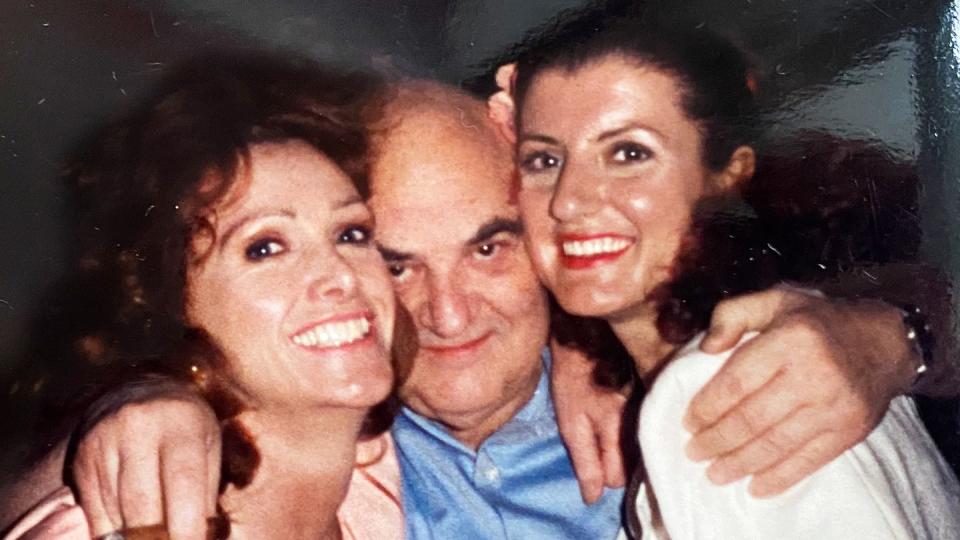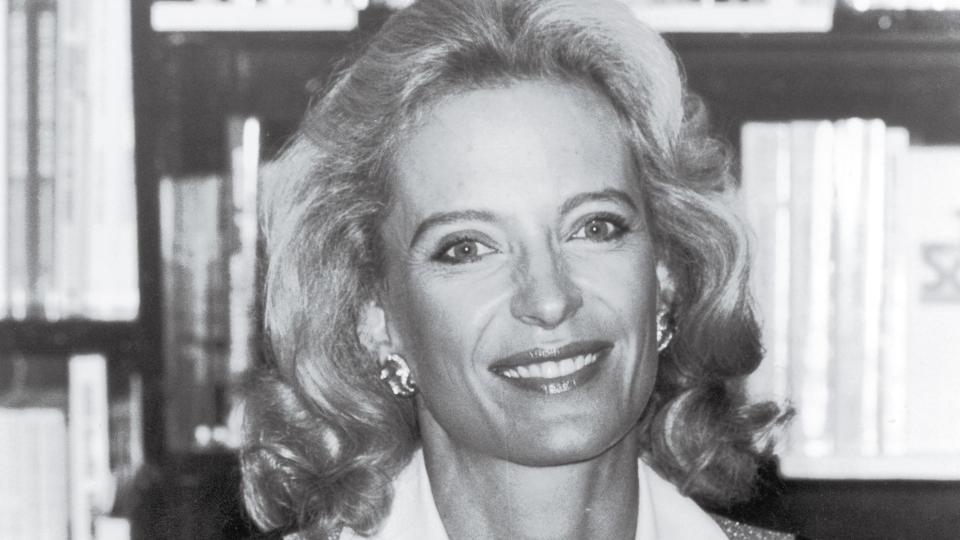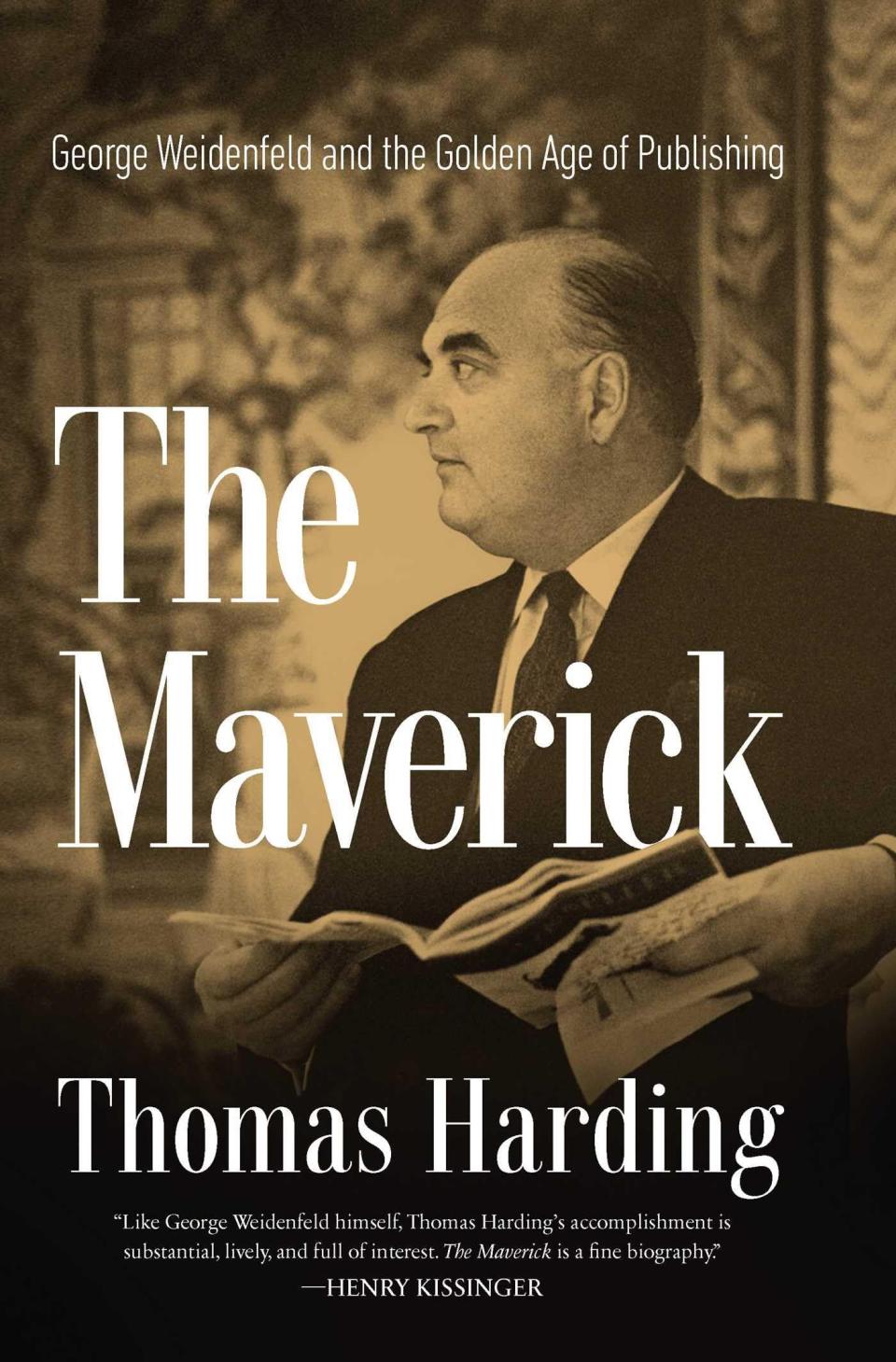A Gentleman's Guide to Social Climbing

- Oops!Something went wrong.Please try again later.
- Oops!Something went wrong.Please try again later.
"Hearst Magazines and Yahoo may earn commission or revenue on some items through these links."
George sat at the corner of the oak boardroom table. Next to him was Ann Getty, company president and chief investor in his American venture, Weidenfeld & Nicolson New York. Also in the room were senior staff members including Dan Green, the CEO; John Herman, the editor-in-chief; and Juliet Nicolson, head of publicity and subsidiary rights. This was a meeting to discuss which books they would next take on.
The meeting was taking place in the offices of Weidenfeld & Nicolson New York at the Harper & Row building on East 53rd Street. The carpet was a lush green and custom ordered. Just outside the boardroom was a kitchen with a walk-in fridge stocked with champagne. In the air hung the smell of cigar tobacco. This meant that George had been in the office for at least an hour.
After discussing various possibilities, Getty said she had a project she wanted to go after. Her favorite book was J.D. Salinger’s Catcher in the Rye. She had heard that Salinger was thinking about writing a sequel, and their firm should acquire it. “But we don’t know anything about the book,” stammered Green. Mrs. Getty, as she was known to her employees, said she didn’t care. “And you don’t mind that not a single word has been written?” the chief executive pressed. She didn’t. The money would be coming out of her pocket, not the company’s. What was the maximum amount she was willing to pay? Ann Getty thought about this a moment and then replied: “$1 million.”

The group was stunned. There was nothing solid about the book. They had not been approached formally by the author or his agent. Worst of all, the advance was excessive. George Weidenfeld’s business partner was unflinching. They were to dedicate themselves to this project, even if it was a phantom.
George had long thought about setting up an American branch of his publishing company; it suited his self-image as a global power broker. It must of course be located in New York. But the New York publishing scene of the 1980s was very different from that of London in the 1950s. The budgets were more tightly controlled, the publishing houses more corporate. For George to break into it, it would take not only a keen eye for talent but also considerable money.
George had first met Ann and Gordon Getty in 1977 at a mutual friend’s dinner party. Gordon was the son of Paul Getty, the oil tycoon. Ann was a philanthropist who sat on various charitable boards. George and the Gettys established a friendship based on a shared appreciation for opera. The Gettys stayed as George’s guest in Salzburg during the summer opera festival and, in subsequent years, he stayed with them. They also went on vacation together twice. “I can’t find words to thank you for the most wonderful holiday,” he wrote to Ann after one of these trips. “I have become an addict of the Getty family—a dangerous thing to be, for it is habit-forming and eminently spoiling.”

It was during these encounters that Ann and George began talking about setting up a publishing business in America. Ann asked how much money it would take to acquire and develop a publishing operation in the United States. He estimated that they would need around $10 million. The years went by, the conversation continued, but no action was taken.
Then, in 1984, Weidenfeld & Nicolson had a particularly bad year. That year alone they would lose over £140,000 on sales of just over £5 million. George decided the way out of his trouble was to persuade Ann Getty to invest in him and his business. So it was that early in 1985, George and Getty set up a new company called the Wheatland Corporation, named after Getty’s hometown in California. Getty was appointed president and George chairman and chief executive. Marc Leland, a former assistant secretary at the U.S. Treasury, was engaged as the legal adviser. With the organizational structure in place, George proposed purchasing a well-established publishing house in America, a fast track into the book industry. Getty suggested the firm whose books she had avidly consumed in her twenties: the legendary Grove Press.
A small, independent publishing house of great literary repute, Grove had been set up by Barney Rosset just after the end of the Second World War. Rosset had championed some of the most iconic books of the mid-20th century, such as Henry Miller’s Tropic of Cancer, William Burroughs’s Naked Lunch, and D.H. Lawrence’s Lady Chatterley’s Lover. He had also been the first to publish many of the key Beat poets, as well as the best-selling Autobiography of Malcolm X. If George was a man who aspired to be part of the establishment, Rosset was the exact opposite.

George went to meet Rosset at his offices in Greenwich Village. The owner of Grove Press was a slight man compared to George, but he could hold his own. He would sell the company, he said, but he wanted to stay on as editor-in-chief. George agreed that Rosset could stay on, though this would be at the discretion of the board, in other words himself and Getty. The deal was done.
On March 1, 1985, it was announced that Wheatland had purchased Grove for $2 million, with an additional $1.5 million made available for operating costs. (A year later Rosset would be fired.) George was spending at least a week each month in New York. Getty had rented an apartment for him, just below her own, at 820 Fifth Avenue. There were stories circulating around the office that they were having an affair. Those promoting these rumors pointed to a picture in George’s apartment of Getty sitting on his knee with an arm around his shoulder. The romance was not inconceivable. George was single at this time and had a penchant for affluent, attractive, younger American women. Others believed that Getty and George’s relationship was purely platonic.
In the evenings George circulated among the cultural elite of New York. Vanity Fair ran a nine-page spread on the publisher under the headline “Lord Big,” in which they called him “a paradox: an outsider who has become Mr. Inside,” adding, “Lord Weidenfeld was always London’s power publisher. Now the party-giving plenipotentiary has joined forces with Mrs. Gordon Getty—and he’s conquering America.”

Yet behind his back people spoke about the fragility of his list. They mocked his naivete. Apocryphal stories were shared, like the time George took the hand of a young woman and said, “My dear, have you thought of harnessing your talents to write a book?” To which she responded, “You son of a bitch! You’ve already published two of them!” Or the dinner party that he hosted and then left halfway through, because he wanted to join another, more interesting gathering. There were echoes of the same old mutterings that had dogged him for years, though now with an American accent. George was a “social climber,” a “cosmopolitan,” a “Gatsby.”
The lead title for W&N New York’s first list in the autumn of 1986 was Princess Michael of Kent’s book Crowned in a Far Country: Portraits of Eight Royal Brides. That she wanted to write a book, which was unusual for royals at the time, is a testament to George’s powers of persuasion. The plan was to use the princess’s celebrity to launch the book and promote New York’s newest publishing house.
The book was not, however, without its problems. On September 22, just weeks before it was due to be launched, Princess Michael was accused of plagiarism. The Observer in the UK reported that parts of the chapter on the Empress Eugénie were taken from another book that Weidenfeld & Nicolson had published, by Harold Kurtz. That same day the princess wrote to George saying that she was “appalled” to read the story in the newspaper. She said that the mistake was “inadvertent” and demonstrated that she was a “beginner.” She then explained that her writing method was to make a note of the author’s name when copying a direct quotation, but in this case she must have “omitted” Kurtz’s name from her notes.

Notwithstanding the legal furor, the book launch went ahead, and in mid-October the princess arrived in the United States for a promotional tour. Starting in New York, she traveled on to Los Angeles, Chicago, Houston, and then Boston. She appeared on three national television programs. It all seemed to be going well. And then a second accusation of literary theft hit the headlines. “Princess pays the price for her plagiarism,” proclaimed the Aberdeen Press and Journal on November 24, before explaining that Princess Michael of Kent had paid compensation to Daphne Bennett, who accused the princess of copying “page after page” of her book without permission. Four months later, in February 1987, the Evening Standard ran a story that three more authors now claimed their work had been taken by the princess without permission.
The release of the princess’s book, with all its ancillary noise, following so hard on the very public bust-up with Barney Rosset, was hardly the auspicious start George had hoped for. Yet his relationship with Ann Getty was more solid than ever. On September 13, 1987, she hosted a 68th birthday party for him at the Foreign Press Association in London. It was meant to be a small, select group of guests, but word of the festivities leaked, and more than 50 people arrived for dinner.
At the meal’s end, George stood up to say a few words. “I am particularly touched, because this is a very common-or-garden birthday,” he began. “It is not my 80th, 70th, 50th, nor any round figure. In fact, the only round figure in this room is the birthday boy.” His self-deprecation drew immediate laughs and applause. George continued, saying that he wished to toast Ann Getty: “I would like to drink to our friendship and partnership and the success of many exciting ventures and adventures on which we are embarked on both sides of the ocean.” He raised his glass, and the group repeated his words, “To Ann.”

The Maverick: George Weidenfeld and the Golden Age of Publishing
amazon.com
After the glasses were returned to the table, George declared that he wanted to propose another toast. Each year on his birthday he made a resolution. For the next year, it would be one of friendship. “The need for friendship is visceral and vital,” he told the group, “and my idea of a real friend is one who plays the dual role of Don Quixote and Sancho Panza rolled into one. They must pull you up and bring you down to earth, condone your dreams and correct your follies. Many of you have done this in the past. Please continue.” With that he raised his glass. “To my friends,” he said. The crowd echoed back to him, “To friends.”
Unfortunately for Weidenfeld, some friendships don’t last forever. In 1990 Grove Weidenfeld went up for sale. At the time a person familiar with Ann Getty’s thinking told the Times, “We did a lot of things since the consolidation last year to stem the losses. But there was always a question of how long Mrs. Getty would remain interested and would continue to finance this publishing house. Today we found out.” Weidenfeld continued his career as a publisher in the UK until his death in 2016.
Excerpt from The Maverick: George Weidenfeld and the Golden Age of Publishing, by Thomas Harding, out from Pegasus Books on August 29, 2023. © Thomas Harding.
This story appears in the September 2023 issue of Town & Country. SUBSCRIBE NOW
You Might Also Like

